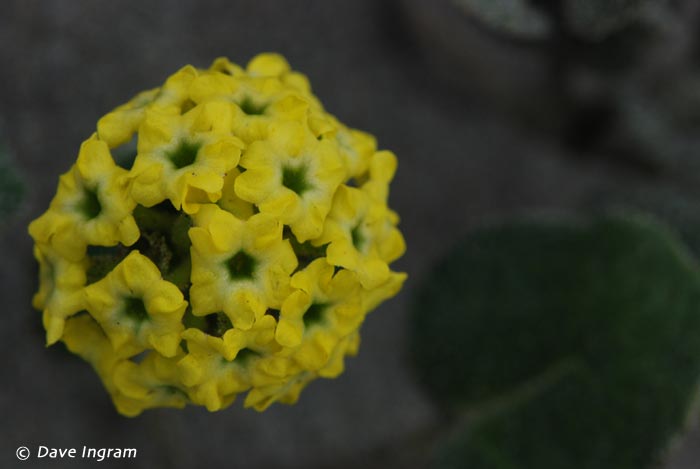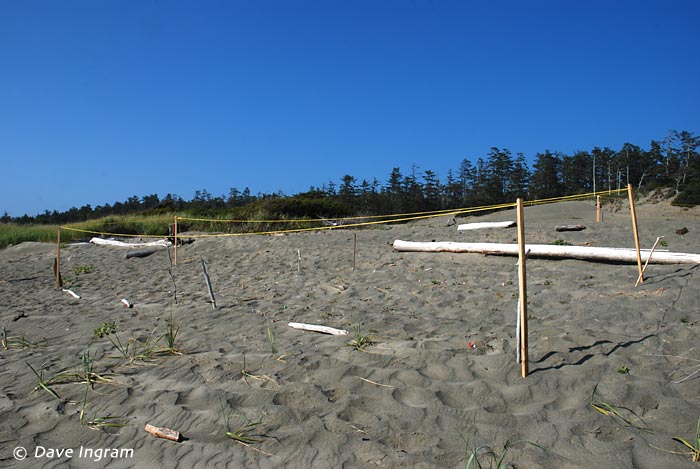After a less than satisfactory morning exploring the intertidal zone at Little Beach, Terrace Beach and Big Beach in Ucluelet (mainly due to the abundance of seaweed) I shifted gears and in the late afternoon. I decided to check out the Parks Canada Pink Sand-verbena (Abronia umbellate breviflora) reintroduction project at the dunes at Wickaninnish Beach in Pacific Rim National Park Reserve. I was at the dunes earlier in the week, but heard that a number of these rare plants were recently transplanted into study plots. It was a perfect opportunity to see a very special plant.
Pink Sand-Verbena

The rare Pink Sand-verbena has long been on my “must see” list. While the plants at Wickaninnish are transplants, this location is the only easily accessible place to see it in bloom. Historic records of the Pink Sand-verbena exist at Ahousat (1915) and on the shores of Pachena Bay (1927). Records of four to five plants in bloom in Clo-oose occur between 1940 and 1945. In 2000, nearly 60 years later, a single plant was found. In 2001, 3 plants reported at Clo-oose but not seen in following years. The plants at Wickaninnish Beach come from the seed stock collected from the Clo-oose plants.
At the Wickaninnish Beach dunes, Pink Sand-verbena was planted in several plots. It is possible to see the flower without entering the roped off areas. Pink Sand-verbena is sensitive to trampling by both people and pets so it is important to keep dogs on leash if you’re exploring the dunes (or better yet, leave Fido at home). Pink Sand-verbena is listed as Endangered under the Species at Risk Act (SARA).
Specialized Habitat
Pink Sand-verbena has very specific habitat needs. It prefers the dynamic section of west and south-facing sandy beaches just below the line of driftwood. Characterized by unstable, free-flowing sand, these sites face the full impact of winter storms and high tides. In addition, distribution and replenishment of populations of the plant may be dependent on the seeds which remain viable for long periods of time.

A number of factors threaten Pink Sand-verbena’s survival in British Columbia including the small size of the natural population, winter storms, and driftwood deposition that may change the structure of the dune ecosystem and sand movement. In addition, trampling and damage by people engaging in recreation activity, especially at Clo-oose along the highly used West Coast Trail is also a possibility. Finally, invasive Beachgrass (Ammophila sp.) can alter dune habitat and displace Pink Sand-verbena and other dune plants that require dynamic sand movement.
Similarities with the Yellow Sand-Verbena

Fortunately, the more common Yellow Sand-verbena (Abronia latifolia) also grows in the dunes so the two plants can be readily compared. A large taproot serves as an anchor for these plants in the shifting sands. Yellow Sand-verbena has thick fleshy kidney shaped leaves and a round cluster of bright yellow flowers on stout stalks. In comparison, Pink Sand-verbena has fleshy oval shaped leaves and pink flowers in round clusters. Both have a very pleasant fragrance that smells a little like dishwashing soap. Bees seem to like the flowers and were active around both species of Sand-verbena.

Learn More
If you want to learn more about the Pink Sand-verbena and/or the dunes at Wickaninnish Beach look for scheduled Parks Canada interpretive walks and presentations. Community participation in invasive European Beach Grass pulls in the dunes is another way to assist in the restoration of dune habitat and the survival of sensitive dune plants. Find out more about the Pink Sand-verbena on the Species at Risk Public Registry. You can also read more about typical dune plants in the article The Dunes at Wickanninish Beach.
